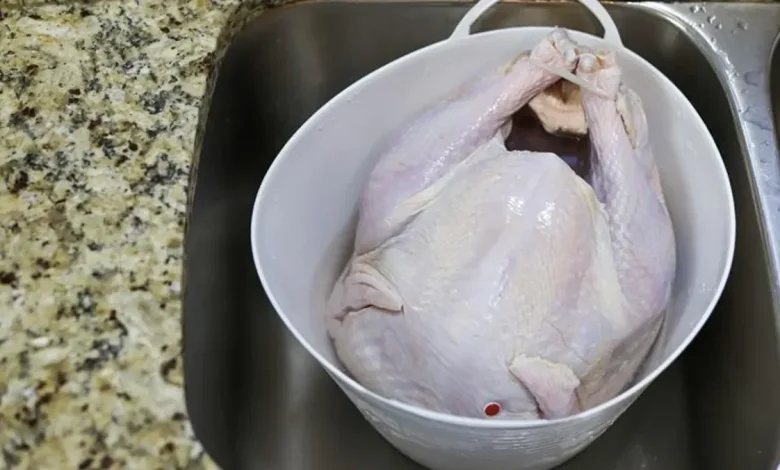Don’t be late: When to start thawing your turkey for Thanksgiving

How to defrost a turkey quickly
Defrosting a whole turkey can take days. This method will speed up the process.
ProblemSolved, USA TODAY
As families prep for Thanksgiving this upcoming Thursday, Nov. 27, one dish usually takes center stage at the dinner table: turkey. While it’s synonymous with the fall holiday, turkey dinners can take a long time to prepare, especially if the bird is thawed in advance.
Turkeys often need ample time to thaw before feasting and festivities, including potentially multiple days in the fridge to unfreeze fully. Unless you’re picking up the poultry on the day of or a bird that is already cooked, that time to start thawing is likely now.
Here’s what you need to know about thawing your turkey – and what to do if you thaw it too late.
When should I start thawing my turkey?
When it comes to thawing a turkey you bought ahead of time and froze, the U.S. Department of Agriculture’s Food Safety and Inspection Service recommends letting the bird to unfreeze in the refrigerator. Cooks should budget about 24 hours of thawing for every 4 to 5 pounds of bird, with the service giving the example of a 16-pound bird taking about four days to fully thaw.
People can also use cold water to thaw their turkeys, which is faster but requires the bird to be cooked immediately after thawing. With this method, cooks should submerge the turkey in cold water while it is in its wrapper or a leakproof bag, changing the water every half hour. Similar to the refrigerator method, people should budget 30 minutes per pound of bird, with a 16-pound bird taking eight hours to thaw.
Either way, cooks should avoid thawing their birds on the countertop, as the service adds that it is unsafe because bacteria can grow and multiply at room temperature. The USDA also has a thawing calculator that cooks can use to determine how long their turkeys need to thaw.
What to do if your turkey isn’t ready
If your turkey isn’t finished by Thanksgiving, don’t fret. There are ways to still get your turkey cooked on time for dinner, according to foodsafety.gov, including:
- Cooking the turkey in individual parts: Cooks can roast the turkey’s thighs, breasts or wings instead of the entire bird at once. Your oven should be set to at least 325°F. To check if the parts are done, use a food thermometer and insert it in the thickest part of each piece of turkey, checking until it reaches an internal temperature of 165°F.
- “Spatchcocking” your turkey: To spatchcock your bird, foodsafety.gov recommends cutting out its backbone using kitchen shears, then flipping it over and pressing firmly on the breast bones so the turkey lies flat. The turkey should roast in the oven at 450°F, with cooking time varying by turkey weight. A spatchcocked turkey can also be grilled. Similar to cooking the turkey in parts, cooks should use a food thermometer to ensure that the innermost part of the thigh, the innermost part of the wing, and the thickest part of the breast all reach 165°F.
- Cook it from a frozen state in the oven: If you’re cooking a frozen turkey, do not use an oven bag. Cooks can pull out the turkey’s giblets after 20 to 30 minutes of baking in the oven. When the innermost part of the thigh, the innermost part of the wing and the thickest part of the breast reach 165°F, it is safe to consume.
- Cook two smaller turkeys: People can also place two smaller turkeys in the oven and cook them, as long as there is ample space for heat to circulate around both birds. Timing varies, but, as with the other methods, the turkey is ready when the temperature in the innermost part of the thigh, the innermost part of the wing and the thickest part of the breast reaches 165°F.





